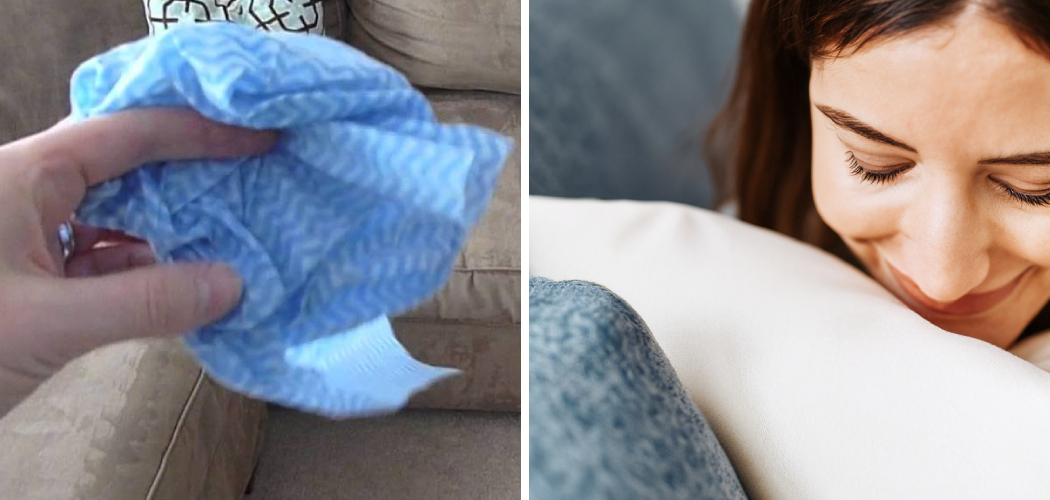New furniture can instantly transform a space, adding style and functionality to your home. However, a common issue many people face is the unpleasant smell that often accompanies new furniture. This odor, usually a result of chemicals used in manufacturing, can be quite persistent.
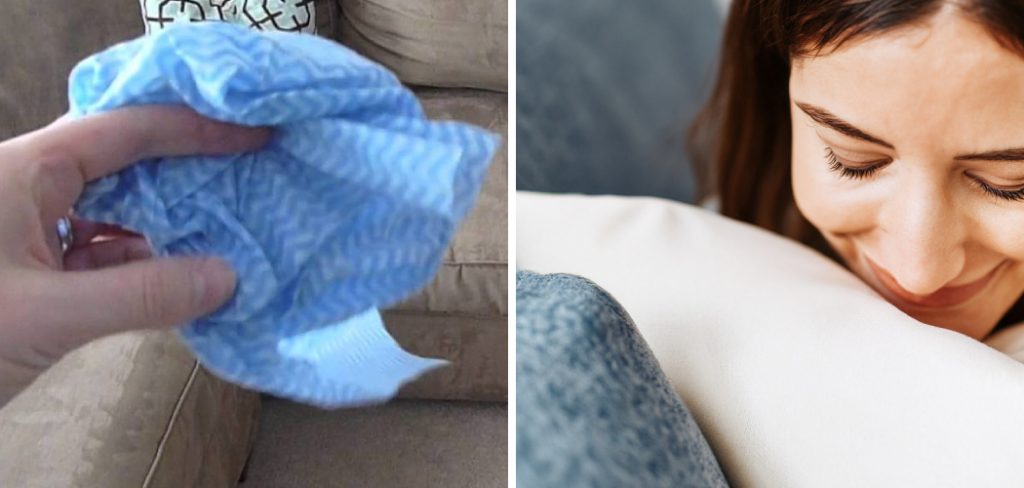
In this blog post on how to get the smell out of new furniture, we’ll explore why new furniture smells, the materials you’ll need to tackle this problem, and step-by-step guidelines to help you get rid of those unwanted odors. By the end, you’ll have practical tips and answers to frequently asked questions, ensuring your home smells fresh and inviting.
What is the Source of the Smell?
Understanding Off-Gassing
The smell of new furniture is often due to a process called off-gassing. This occurs when volatile organic compounds (VOCs) used in the manufacturing process are released into the air. These VOCs can come from adhesives, paints, varnishes, and other chemicals used to treat the furniture.
Types of Materials
Different materials contribute to varying levels of off-gassing. For instance, particleboard or MDF (medium-density fiberboard) tends to emit more VOCs than solid wood. Upholstered furniture might also release odors from foam cushions, fabric treatments, and flame retardants.
Health Concerns
While the smell is usually just an annoyance, some VOCs can cause health issues such as headaches, dizziness, or even respiratory problems in sensitive individuals. Understanding the source of the smell can help you take effective steps to mitigate it.
Why You Should Address the Smell
Creating a Pleasant Living Environment
A home should be a sanctuary where you can relax and unwind. Lingering chemical smells can detract from the comfort and coziness of your space. Addressing the odor ensures your home remains a pleasant environment for everyone.

Health Benefits
Reducing exposure to VOCs can have significant health benefits. Even if the smell doesn’t bother you, prolonged exposure to high levels of VOCs can lead to health issues over time. Taking steps to eliminate these chemicals from your living space can improve your overall well-being.
Enhancing Furniture Longevity
By taking care of the odor problem, you’re also caring for your furniture. Proper maintenance and ventilation can enhance the longevity of your pieces, ensuring they remain in excellent condition for years to come.
Needed Materials
Air Purifiers and Fans
Investing in a good air purifier with a HEPA filter can significantly reduce VOC levels in your home. Fans can also help by increasing air circulation and speeding up the off-gassing process.
Baking Soda
Baking soda is a natural odor absorber. It’s especially useful for upholstered furniture and carpets. Ensure you have enough to sprinkle generously on affected areas.
White Vinegar and Water
A mixture of white vinegar and water can neutralize odors on hard surfaces. This solution is effective and safe for most types of furniture.
Step-by-step Guidelines on How to Get the Smell Out of New Furniture
Step 1: Ventilate Your Space
Open windows and doors to allow fresh air to circulate. This is the simplest and most effective way to reduce the concentration of VOCs in your home. Use fans to enhance airflow, directing them towards open windows to push out the stale air. You can also use exhaust fans in bathrooms and kitchens to further increase ventilation. You’ll need to ventilate regularly until the smell dissipates. You can also leave your furniture outside in a well-ventilated area, such as a patio or garage.
Step 2: Use Air Purifiers
Place air purifiers with HEPA filters in rooms with new furniture. These devices can capture VOC particles, reducing their presence in the air. Run the purifiers continuously for at least a week to see noticeable improvements. It’s also essential to regularly change out the filters as they can become clogged with VOCs. You can also consider using activated carbon filters, which are specifically designed to absorb VOCs.
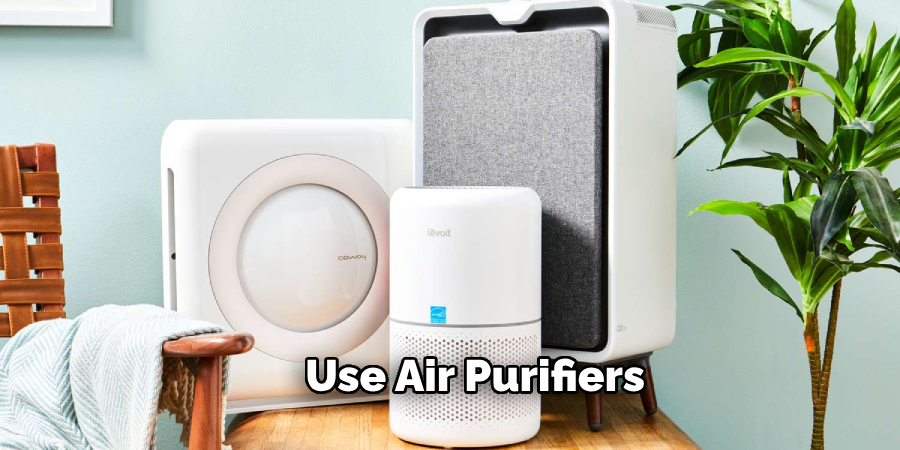
Step 3: Apply Baking Soda
Sprinkle baking soda on upholstered furniture and carpets. Leave it for a few hours, then vacuum it up. Baking soda absorbs odors effectively, providing a simple and non-toxic solution. The longer you leave it on, the better the results. But be sure to test a small, inconspicuous area first to ensure it doesn’t damage the fabric. It’s also a good idea to spread baking soda on the furniture before going to bed, allowing it to work its magic overnight.
Step 4: Clean with Vinegar Solution
Mix equal parts of white vinegar and water in a spray bottle. Lightly mist hard surfaces like tables, shelves, and cabinets. Wipe down with a clean cloth after letting the solution sit for a few minutes. Vinegar neutralizes odors without leaving a residue. You can also add a few drops of essential oil for a pleasant scent. The vinegar smell will dissipate as it dries.
Step 5: Use Charcoal or Activated Carbon
Place bowls of activated charcoal or carbon near your new furniture. These substances are excellent at absorbing VOCs and other odors. Replace them every few days until the smell dissipates. You can also use charcoal bags specifically designed to absorb odors. It’s a more natural and eco-friendly alternative to chemical sprays.
Step 6: Sun and Air Out Your Furniture
If possible, take your furniture outside on a sunny day. The sun’s UV rays can help break down VOCs. Leave the pieces out for a few hours to air out. If outdoor space isn’t available, place furniture near open windows or in well-ventilated areas. If the smell persists, you can also try using a hairdryer on low heat to speed up the off-gassing process.
Step 7: Be Patient
Patience is key when dealing with new furniture smells. It may take some time for the odor to completely dissipate, depending on the materials used and the ventilation in your home. Continue with these steps until you are satisfied with the results. The more effort you put in initially, the faster the smell will go away.
Following these guidelines on how to get the smell out of new furniture will effectively eliminate the smell from your new furniture, creating a fresher and healthier living space. Remember to always read labels and follow the manufacturer’s instructions when using cleaning products on your furniture.
With proper care and maintenance, you can enjoy your beautiful new pieces without any unpleasant odors lingering in your home! So don’t let that new furniture smell get in the way of enjoying your dream home – use these tips and tricks to get the fresh and inviting space you deserve. Happy decorating!
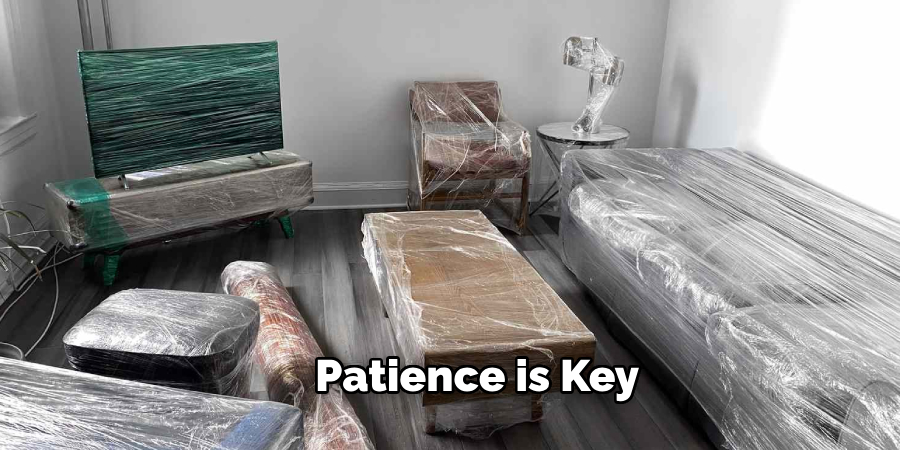
Additional Tips
Regular Cleaning
Keep your furniture clean by dusting and vacuuming regularly. This helps remove any lingering VOC particles from surfaces and fabrics.
Use Essential Oils
Add a few drops of your favorite essential oils to a diffuser to mask any remaining odors. Scents like lavender, eucalyptus, and lemon are particularly effective and also provide a calming ambiance.
Sunlight Exposure
Whenever possible, expose your furniture to direct sunlight. Sunlight can help break down VOCs and reduce odors. Just be cautious with delicate fabrics and finishes that might fade or get damaged.
Frequently Asked Questions
Q: How Long Does It Take for the Smell to Go Away?
A: The duration can vary depending on the material and the severity of the off-gassing. Generally, it can take anywhere from a few days to several weeks for the smell to dissipate completely. Consistent ventilation and using odor absorbers can speed up this process.
Q: Are There Any Products I Should Avoid?
A: Avoid using harsh chemical cleaners, as they can introduce more VOCs into your home. Stick to natural solutions like vinegar, baking soda, and mild soap. These options are effective and safe for most surfaces.
Q: Can Houseplants Help With Odors?
A: Yes, certain houseplants can absorb VOCs and improve indoor air quality. Plants like spider plants, peace lilies, and Boston ferns are known for their air-purifying properties. Adding a few of these plants to your home can help reduce odors naturally.
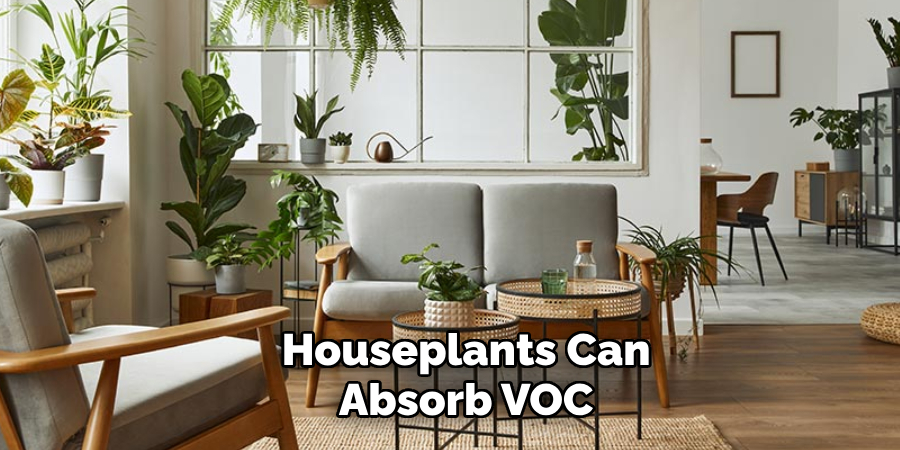
Q: What Are Some Signs of a Serious Off-Gassing Problem?
A: If you experience symptoms like headaches, dizziness, nausea, or respiratory issues when exposed to new furniture smells, it’s best to consult a professional. These symptoms can indicate high levels of VOCs and may require additional measures to address the issue.
Conclusion
Dealing with the smell of new furniture can be a daunting task, but with the right approach, you can create a fresh and welcoming environment in your home. By understanding the source of the odor and following our step-by-step guidelines on how to get the smell out of new furniture, you’ll be well on your way to eliminating those unwanted smells.
Remember, a well-ventilated, clean space not only enhances your living environment but also contributes to your overall health and well-being. Don’t let the smell of new furniture deter you from enjoying your beautiful new pieces—take action today and breathe easy, knowing your home is fresh and inviting.
For more information and tips on creating a healthier home environment, feel free to explore additional resources or reach out to experts in the field. Happy decorating!
